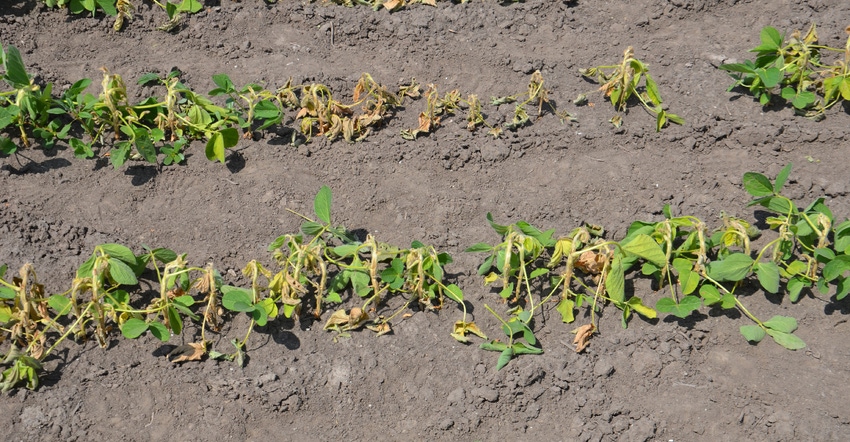
The No. 1 rule for spraying soybeans postemergence in 2021 is making sure you know which herbicide-tolerant traits, if any, soybeans in a field possess before you pull into the field.
“It’s always been important to keep good field records, but it’s critical now,” says Bill Johnson, Purdue University Extension weed control specialist. “Soybeans have different traits allowing certain herbicides to be sprayed over the top, but they’re not interchangeable. You must know which trait is in each field, and which chemical you can spray and which chemical you can’t spray. Otherwise, you could wipe out a field pretty quickly if the soybeans aren’t tolerant to the chemical you’re applying.”
If you’re trying to keep track of which herbicides can be sprayed on which soybeans, Johnson offers this quick refresher. XtendFlex soybeans, approved for commercial use for the first time in 2021, have tolerance to dicamba, glyphosate and glufosinate, the active ingredient in Liberty. Enlist E3 soybeans are tolerant to glyphosate, 2,4-D choline and glufosinate.
LibertyLink GT27 soybeans are tolerant to glyphosate, glufosinate and the active ingredient in Balance herbicide, which is also the active ingredient in Alite 27 herbicides. LibertyLink soybeans are tolerant to glufosinate, and Xtend soybeans are tolerant to applications of dicamba and/or glyphosate. Roundup Ready 2 Yield soybeans are only tolerant to glyphosate, and non-GMO varieties are sensitive to all these chemistries.
You can’t mix and match, and you can’t afford to take chances, Johnson says. You need to know which herbicides you can use, and which you can’t, given the soybean varieties which you’re planting. It’s why some growers are choosing to go with only one system, rather than attempting to switch back and forth when it’s time to spray.
Contamination issues
The picture of the damaged soybeans shown above illustrate what happens when Engenia, a product containing dicamba, was sprayed on soybeans without the dicamba-tolerant trait. The damage is extensive.
“That would be a high percentage for a sprayer contamination case if the sprayer just wasn’t rinsed out properly,” Johnson says. “However, it could represent a case where someone didn’t completely empty the sprayer after applying dicamba.
“The thing is that it doesn’t take 10% of a normal rate to cause damage if soybeans are susceptible to the chemical. You could see damage at 1%, and it’s quite possible to have a 1% solution just by not rinsing the spray tank properly as required on the label.”
That’s why some commercial applicators are reluctant to switch from one product to the next — at least using the same sprayer. “There is just no room for error with these products,” Johnson emphasizes. “You can’t be sloppy, and you must know which trait the beans have. You can’t tell by looking at them, so it requires careful record-keeping, either by hand or computer.”
About the Author(s)
You May Also Like




